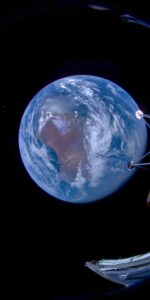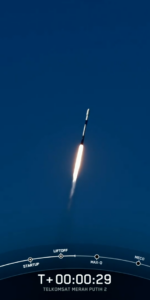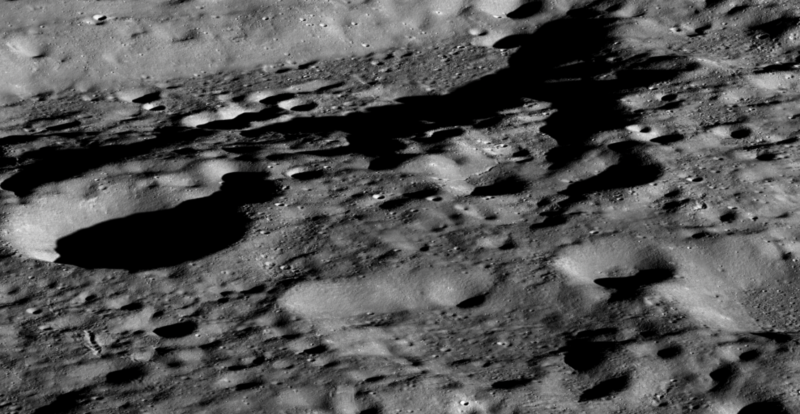
Intuitive Machines’ IM-1 mission is halfway through its cruise to the Moon. The pioneering mission launched at 1:05 AM on February 15th, and it aims to enter lunar orbit on Wednesday afternoon. Intuitive Machines’ 7-foot-tall Nova-C lander, named Odysseus, is aiming to become the first commercial lander to touch down successfully on the Moon, as well as the first American spacecraft to explore the lunar surface in 52 years. Beyond that, the mission will also break new ground in our exploration of the Moon’s geologic history. If successful, IM-1 will provide humanity’s first glimpse of the lunar south pole, a unique region which will be the site of the planned Artemis Base Camp.
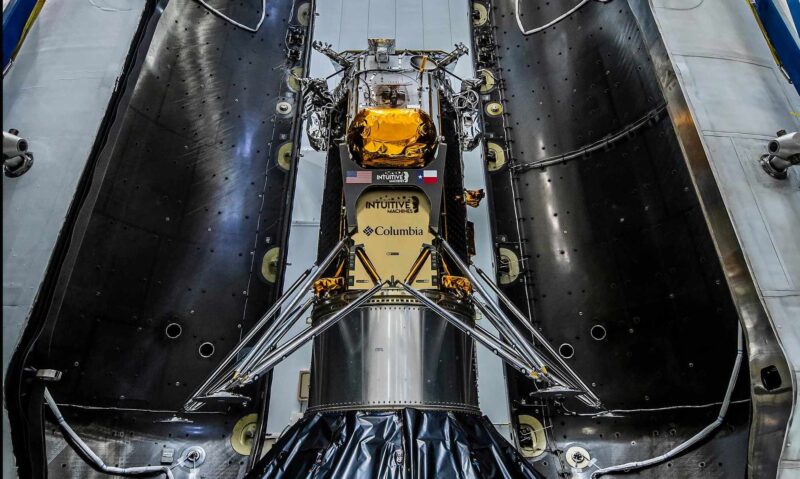
The stakes for Intuitive Machines are self-evident, as IM-1 will test the company’s lander technology for the first time. Several of Intuitive Machines’ leaders and engineers formerly worked for NASA on the Constellation program’s Morpheus lander prototype [1], and they are eager to use their technology to inaugurate a new era of lunar exploration. The landing will also be a vital moment for NASA and its Commercial Lunar Payload Services (CLPS) program. CLPS aims to leverage creative solutions from the private sector to enable frequent, low-cost access to the lunar surface.
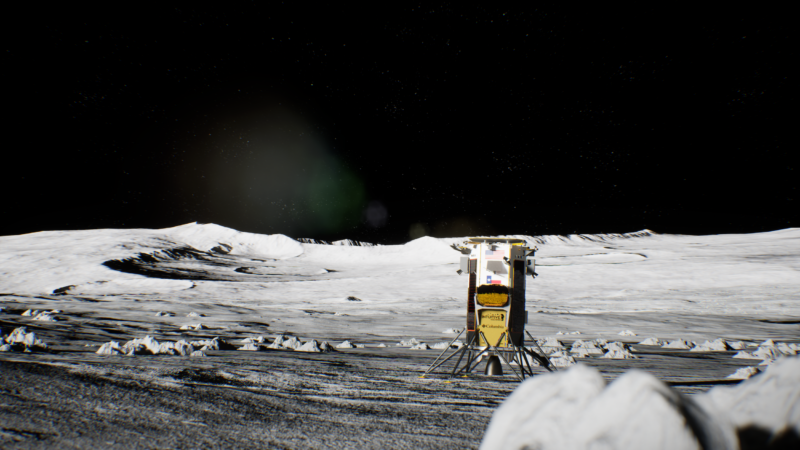
However, the first CLPS mission met a heartbreaking fate when Astrobotic’s Peregrine lander suffered a crippling propellant leak. IM-1 will be the second test of the CLPS philosophy. While NASA has stated that it will remain committed to the program in the event of a second failure, a successful landing would quiet critics and enable scientific investigations which are more ambitious and valuable than the payloads on Peregrine and Odysseus.
Lunar scientists are eagerly anticipating the first images and data which Odysseus will collect from the lunar surface. In February of 2023, NASA made the bold decision to move the IM-1 landing site to the lunar south polar region. Intuitive Machines complied. The company would like to demonstrate that its landers can operate at the south pole prior to the IM-2 mission to a ridge near Shackleton Crater.
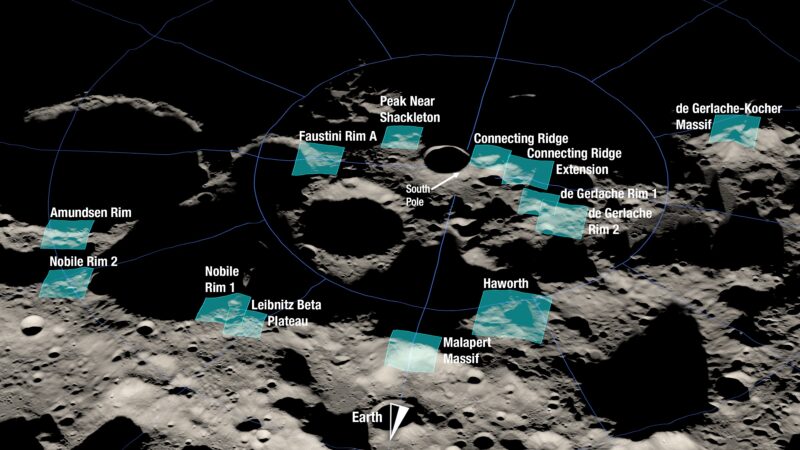
The lunar south pole is a unique region with immense potential for future exploration. Due to the Moon’s negligible axial tilt, the floors of large polar craters are in permanent shadow. With temperatures as low as -415 degrees Fahrenheit (25 degrees Kelvin), the largest of these craters can trap water molecules and force them to condense into ice. The purity and the physical state of these ice deposits is unknown. However, in some cases, it might be economical to extract the ice and use it to provision a lunar base. In addition, some craters at the south pole, such as Shackleton, have rims which feature near-permanent illumination. A base at one of these sites would be able to collect solar energy for up to 85% of the lunar year while experiencing moderate temperature swings.
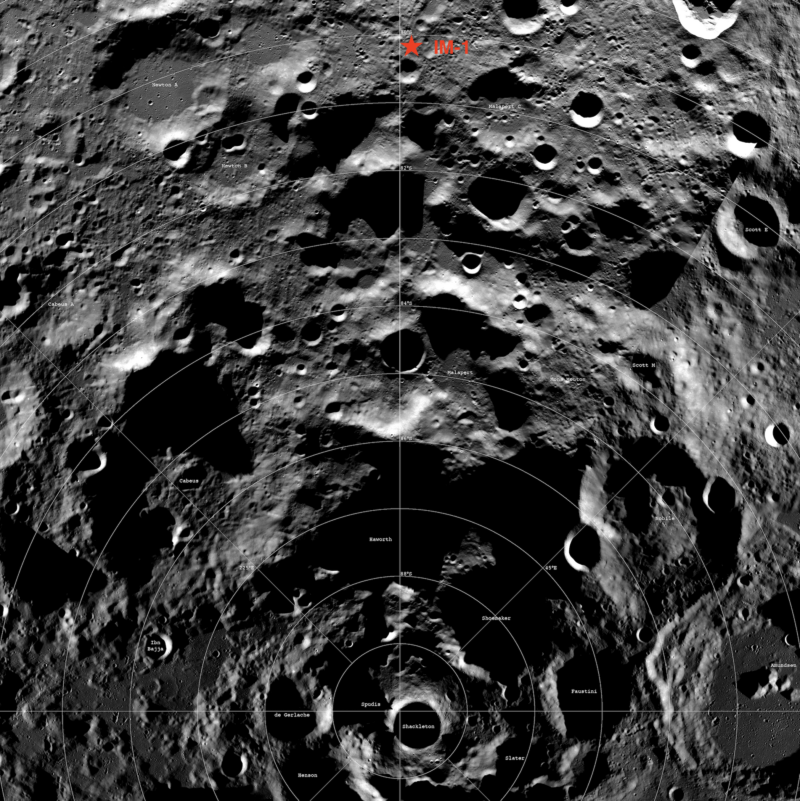
If it lands safely, Odysseus will make history as the first spacecraft to explore one of the Moon’s poles. Lat year, the Indian Space Research Organization (ISRO)’s Chandrayaan-3 mission landed in the lunar Antarctic Circle at -69 degrees of latitude. However, this site was not far enough to the south to harbor the cold traps and the stark shadows which distinguish the pole and its surroundings. At -80.2 degrees of latitude, the IM-1 landing site is at the boundary of what geologists would classify as the polar environment.
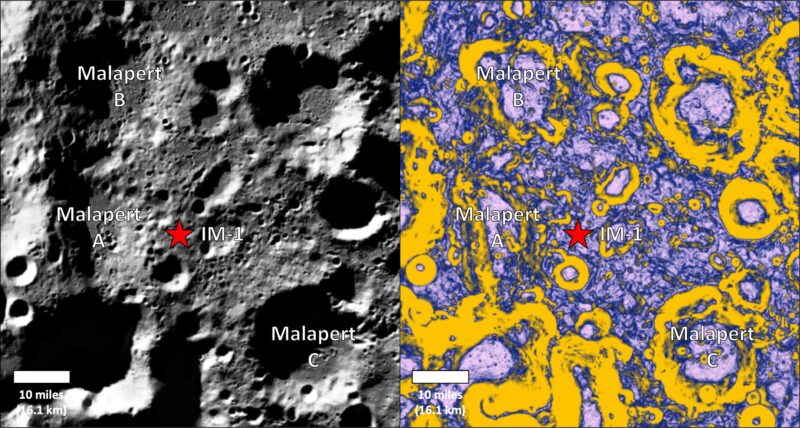
Nova-C will target a circular landing zone with a radius of 100 meters, which is situated in the rugged highlands which dominate the polar region. The intended landing site is on a plateau in between the craters Malapert A, B, and C. Malapert C and an unnamed crated directly south of the landing site may contain permanently-shadowed regions (PSRs) which might harbor water ice, provided that the temperatures inside these areas are sufficiently low. However, these craters are near the most northerly known PSRs. Malapert A, B, and C are all between 24 and 40 kilometers in diameter and have been heavily degraded by subsequent meteorite impacts.
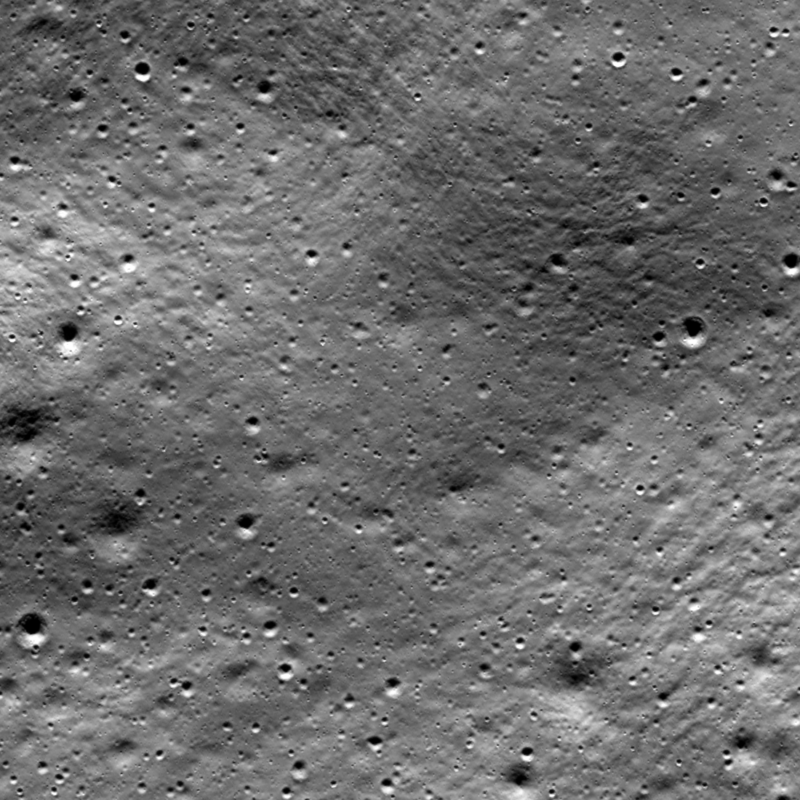
The Lunar Reconnaissance Orbiter recently imaged the IM-1 landing site [2]. The high-resolution photographs from its narrow-angle camera reveal that the area is peppered with small impact craters, which is to be expected in such an ancient location. However, there are no major obstacles or hazards which would pose a prohibitively large threat to Odysseus.
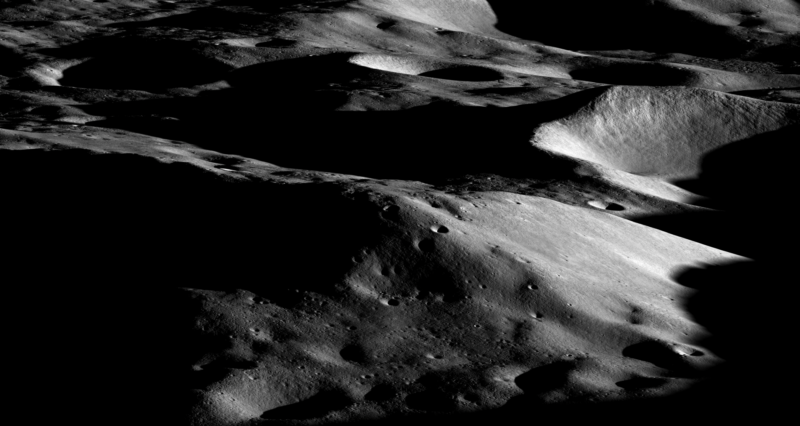
The IM-1 landing site is 300 kilometers away from the south pole, and it is less than 150 kilometers north of Malapert Massif and Malapert Crater itself. The former is the largest mountain on the Moon and one of the most promising candidate landing sites for Artemis 3, while the latter contains a large permanently-shadowed region (PSR). IM-1 will not study either location, and given that its landing site does not have a line of sight to Malapert C, it will not be able to photograph that PSRs, either. However, the mission will teach planetary scientists more about the geology and topography of the region, which will allow NASA to attempt more daring expeditions with robots and astronauts in the future.
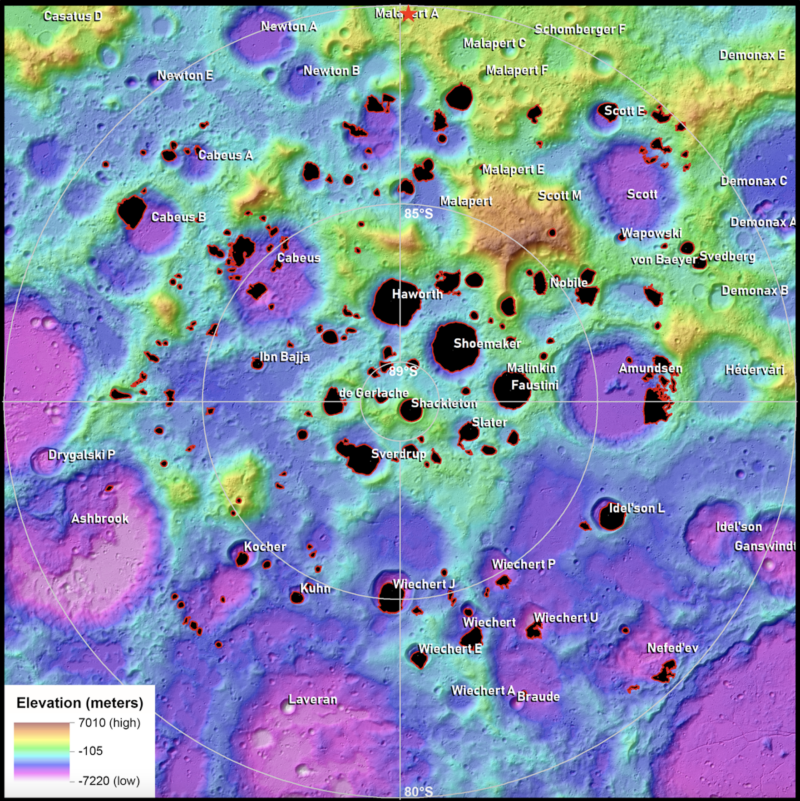
IM-1 is a stationary lander, but it will be able to image its surroundings and visually assess the local geology. Based on the color, the surface texture, and the crystal size of nearby rocks, it might be possible to determine the identity of the geologic unit which dominates the region. Additionally, planetary geologists would be interested to see whether multiple types of rock are visible, as unique specimens might have been excavated from lower levels within the lunar crust by impacts.
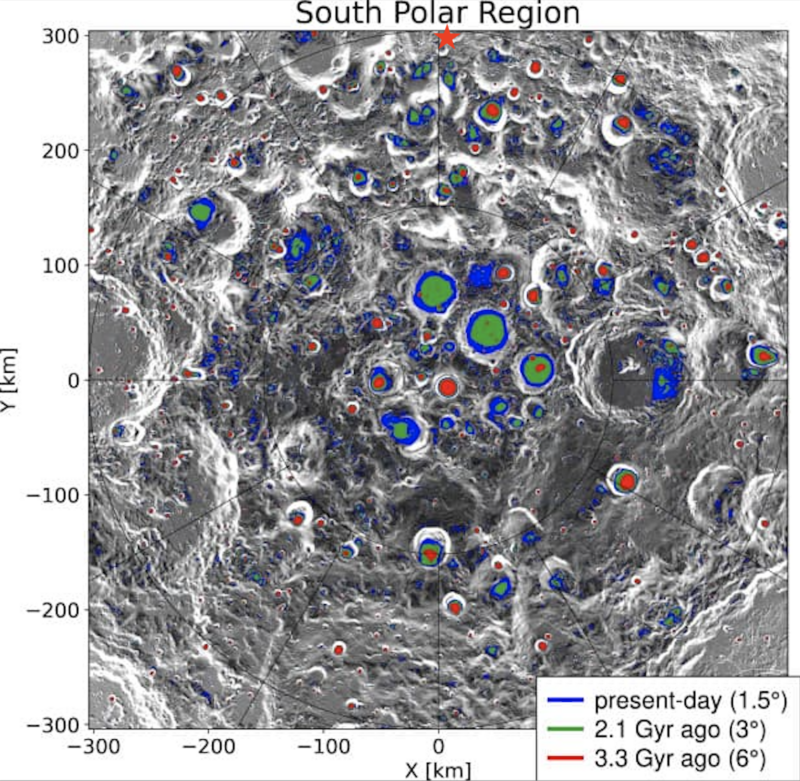
However, IM-1’s greatest contribution might be its observations of the regolith (lunar dust) at the south pole. Some scientists and engineers are concerned that polar regolith is more porous, or “fluffy,” than the regolith which covers most of the Moon [3]. If this is true, a spacecraft might partially sink into the surface when its engine cuts off, imparting a significant shock onto its fragile landing legs. Astronauts and rovers would need to tread through thick lunar dust as they travel across the lunar surface. If this theory sounds familiar, it is because British astronomer Thomas Gold hypothesized that spacecraft would be swallowed up by powdery lunar dust in the 1960s. Gold was proven wrong by the robotic Luna and Surveyor probes, but as the south pole fell into NASA’s sights, his prediction returned with a vengeance.
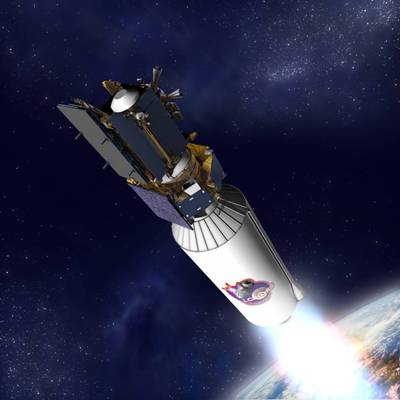
The lunar near side and far side experience sudden swings in temperature at dawn and dusk. In sunlight, the temperature at the equator is 250 degrees F (120 C); in darkness, it is -208 degrees F (-130 C). Subscale experiments conducted in Earth-based laboratories suggest that lunar regolith is heavily compacted by these thermal cycles. However, this may not be the case at the poles, where the Sun remains within a few degrees of the horizon and changes in temperature are less severe.
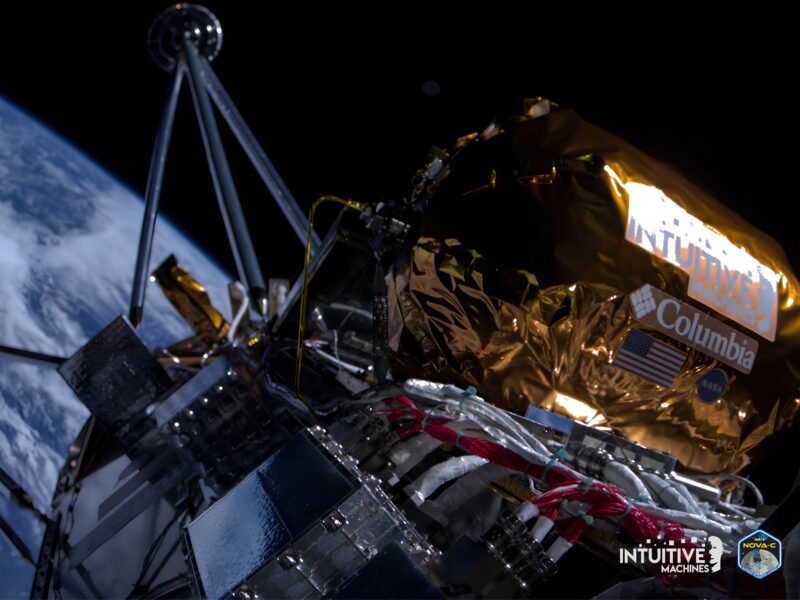
The regolith might be particularly fluffy within PSRs, which never see the light of day and therefore have a fixed temperature. When NASA’s Lunar Crater Observation and Sensing Satellite (LCROSS) crashed into a PSR, data indicated that the regolith at the site had a porosity of 70%. IM-1 will be the first mission capable of probing this hypothesis and testing whether it pertains to the illuminated portions of the south polar region. Just four days remain until Odysseus will hopefully land softly and begin a new chapter in the history of lunar science.




